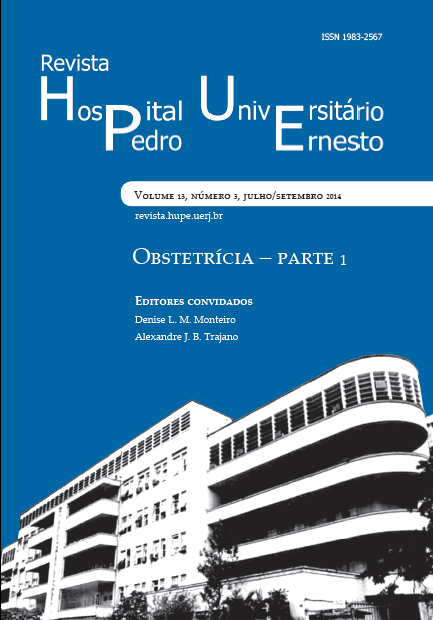Fetal growth estimates through sonography
DOI:
https://doi.org/10.12957/rhupe.2014.12137Abstract
The perinatal risks of the changes in fetal growth are well established and the birth weight is therefore an important predictive parameter of perinatal morbidity and mortality and, its correct evaluation, an important tool to obstetrics good practice. The errors in estimated fetal weight with bidimensional ultrassonography (USG2D), even under ideal conditions, may vary 7 to 10%, reaching 14%, which increases the risk of failure in extreme situations, making clear the need to improve the precision of its estimate. Therefore, the aim of this study is to review the literature about ultrassonographic estimated fetal weight, searching for methods with better accuracy that can positively influence clinical practice. The errors in estimated fetal weight by USG2D, notedly near term, should be in part, because it’s not possible to measure the muscle compartment and soft tissue with this technology, and the variations in these compartments are responsible to 46% of the alterations in birth weight. Currently there are evidence that fetal limbs volumetry associated with bidimensional measures are the best predictors of estimated fetal weight, with margin of error of 6 to 7%, and several studies have used this parameters, reaching more reliable results than the traditional formulas used by USG2D. However, the literature remains controversial in the topic, with studies questioning the advantage of the method. Considering that in pregnancy follow up, notadly high risk, estimated fetal weight is an importante parameter analysed, highlights the relevance of the search for methods with better accuracy, which can include the incorporation of volumetric measures.Downloads
Published
2014-07-29
Issue
Section
Artigos


